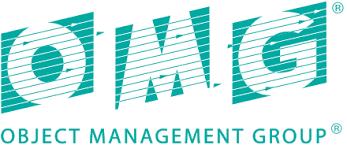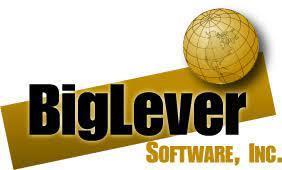
7 minute read
Recent events and updates in the field of systems engineering
SYSTEMS ENGINEERING NEWS
SYSTEMS ENGINEERING NEWS
Recent events and updates in the field of systems engineering
INCOSE and SAE International Announce Joint Membership Agreement
INCOSE and SAE International have announced a joint membership model, whereby members of both organizations can pay discounted membership fees for each organization. INCOSE will offer a 15% discount for joint membership. SAE International will offer a 15% discount for joint membership. Joint membership is available to regular, senior, and student members of INCOSE and SAE International, with some special exclusions. Both organizations are very active in advancing the systems engineering discipline within their respective spheres of concern. More information:
• INCOSE: helpdesk • SAE International: membership
Object Management Group RAAML Beta Version 1.0 Specification Defines Extensions to SysML
In September, international technology standards organization Object Management Group® (OMG®) issued the Beta version 1.0 of its Risk Analysis and Assessment Modeling Language (RAAML) specification. The standard defines extensions to the SysML open-source systems modeling language needed to support safety and reliability analysis. A group of industry experts at the OMG has been working since 2016 to define the new specification, which provides the necessary capabilities. “The need for a standardized Unified Modeling Language (UML) profile/library for addressing safety and reliability aspects emerged long ago,” said Kyle Post, Systems Safety Technical Leader at Ford Motor Company and a member of the team that designed and wrote the standard. “Working group members have seen multiple commercial-grade model-based safety and reliability solution implementations being developed during the recent years and successfully used in practice. We drew upon that experience and expertise in the design of this spec.” Their new RAAML Beta Version 1.0 specification defines extensions to SysML needed to support safety and reliability analysis. It provides the modeling capabilities for tool vendors to build safety and reliability modeling tools that provide traditional representations (e.g. trees, tables, etc.) while using a modern model-based approach. The RAAML specification can provide the foundation for conducting various safety and quality engineering activities including safety and reliability analysis methods. Besides the method support, linkages to the SysML model-of-interest are provided, enabling integration with and traceability to the analyses.

The spec describes the RAAML core concepts and shows: That simple concepts are powerful enough to unite all safety and reliability information across a variety of analysis methods, The approach to automating several safety and reliability analyses, which is built on leveraging existing SysML functionalities to ensure that the profile and library is usable with existing tooling, Specific safety and reliability analysis methods and application domains that are supported, including Failure Mode and Effects Analysis (FMEA), Fault Tree Analysis (FTA), System Theoretical Process Analysis (STPA), Goal Structuring Notation (GSN), ISO 26262 Road Vehicles Functional Safety, and Extension Mechanisms that are typically needed by the industry to apply the specification in practice. The most current version of the document is located here. OMG specifications address middleware, modeling and vertical domain frameworks. All OMG specifications are available from the OMG website.
SpesML - SysML Workbench for the SPES Methodology
The German Chapter of INCOSE (GfSE) conducted a webinar on 6 October, 2021 under the subject title. A summary of this significant work follows. Scientific research results achieved together with partners from industry and academia by the Technical University of Munich show that the introduction of model-based system development of cyber-physical systems into the industrial development process offers a wide range of benefits, but requires a readjustment of the development. This readjustment concerns the development method, artifacts, tools and organization. So far, the industrial introduction of MBSE often uses the modeling language SysML as a quasi-standard, which is firmly established in practice by tool providers and standardization organizations. However, the analysis of the introduction projects shows that SysML is currently often used without a consistent development methodology, which (i) specifies which models are created and how these models are interrelated, and (ii) provides a precise understanding of the diagrams. Thus, crucial potential offered by MBSE remains unused, because ultimately the wellcoordinated selection of methodology, modeling language and modeling tool is a crucial factor for a successful application of MBSE in industrial practice. The project "SysML Workbench for the SPES Methodology" (SpesML), funded by the German Federal Ministry of Education and Research (BMBF) and involving a total of eleven partners from industry and research as well as 2 active associated partners, aims to close this gap and to show ways for a successful implementation of the MBSE methodology in industry. With the Software Platform for Embedded Systems (SPES), an end-to-end methodology for MBSE has been developed. On this basis, a SysML profile with a precise semantics that can be used for automation such as automated analysis and simulation, is defined in SpesML. This gives the widelyused modeling language SysML a methodological foundation and thus opens the way to comprehensive MBSE. Key messages in the webinar were: • Challenges in the implementation of MBSE • Introduction into basic concepts of the SPES methodology • Implementation of initial concepts in SysML within the SpesML Workbench based on MagicDraw • MBSE maturity model as a proven approach for practical MBSE implementation. Join GfSE (German Chapter of INCOSE) here

Tools: BigLever PLE Studio
BigLever Software has released the first of a three-part series "The Art & Science of Feature-based PLE” to subscribers to its PLE Insight newsletter. The series specifically concerns onePLE Studio, a component of BigLever’s solution for Feature-based Product Line Engineering (PLE). The paper and BigLever’s home page link to additional resources such as PLE blogs, news releases, webinars, INCOSE’s PLE Primer and ISO/IEC 26580:2021.

CAPELLA DAYS 2021 - November 15-18, 2021 (Free Online Event)
Capella Days is the annual event that regularly brings together the MBSE community of Arcadia and Capella practitioners, organized by Obeo, in partnership with Thales. After a warm-up on the first day to start this event, attendees will learn from concrete case-studies of Arcadia and Capella in different industries: space, energy, railway, electronics, air traffic management, healthcare, education. Attendees will benefit from the experience of industrial adopters (such as Siemens or Thales) who have deployed an MBSE approach with Arcadia and Capella on their projects.
AGENDA
Day 1: Monday 15th of November 3:35 pm CET How I pack my suitcase 4:15 pm CET Capella Warmup - Introduction to CAPELLA/ARCADIA and NASA Systems Engineering Handbook: Modeling overview with the HUBBLE Space Telescope
Day 2: Tuesday 16th of November 4:05 pm CET The long way from Bid to project... supported by Capella 4:45 pm CET A STEP towards Model-based: Case Study covering Conceptual Design of a Fusion Power Plant 5:25 pm CET Using MBSE to integrate engineering undergraduate courses curriculum

Day 3: Wednesday 17th of November 4:05 pm CET Exploring the various roles of MBSE in the digital thread 4:45 pm CET Enhancing CubeSat design through ARCADIA and Capella: a concrete application 5:25 pm CET Where to start with MBSE when thousands of system requirements are already defined
Day 4: Thursday 18th of November 4:05 pm CET An example of model-centric engineering environment with Capella and CI/CD 4:45 pm CET Using MBSE and Capella to improve regulatory certification 5:25 pm CET How much time does modeling take? Experiences from modeling without experience
More about the event here: Capella Days 2021 Registrations: Capella Days 2021 - Register
Tom Sawyer Releases Perspectives 10.0
Tom Sawyer Perspectives is a low-code graph and data visualization and analysis development platform. Integrated design, preview interfaces and extensive API libraries allow developers to create custom applications that intuitively solve big data problems. Features include advanced edge labeling, precise shape clipping, port and connectors controls, and incremental layout to see the superstructure of data and produce visual graphs for understanding by domain experts and stakeholders alike. This release includes new features, improvements, and architectural changes including: • Interactive graphic schema editor • Automatic integrator bindings for graph databases • Native graph in-memory model • Schema code generator tool • Dynamic rulesheet domains • Dynamic inspectors.
More information: Tom Sawyer Perspectives

INCOSE Loss-Driven SE Initiative (LDSE)
The International Council on Systems Engineering (INCOSE) in 2020 formed a Working Group with the objective of identifying commonality and synergy among loss-driven specialty areas. LDSE domains include reliability, sustainability, survivability, risk management, resistance, resilience, agility, safety, and security. The LDSE initiative aims to unify these loss-driven specialty areas with one another, and to integrate loss-driven activities into the normal systems engineering lifecycle involving development and use of systems. LDSE was featured via a number of articles on the topic in the January 2021 edition of INSIGHT, INCOSE’s quarterly practitioners’ magazine. Contact John Brtis (jbrtis@johnbrtis.com) for more information.





